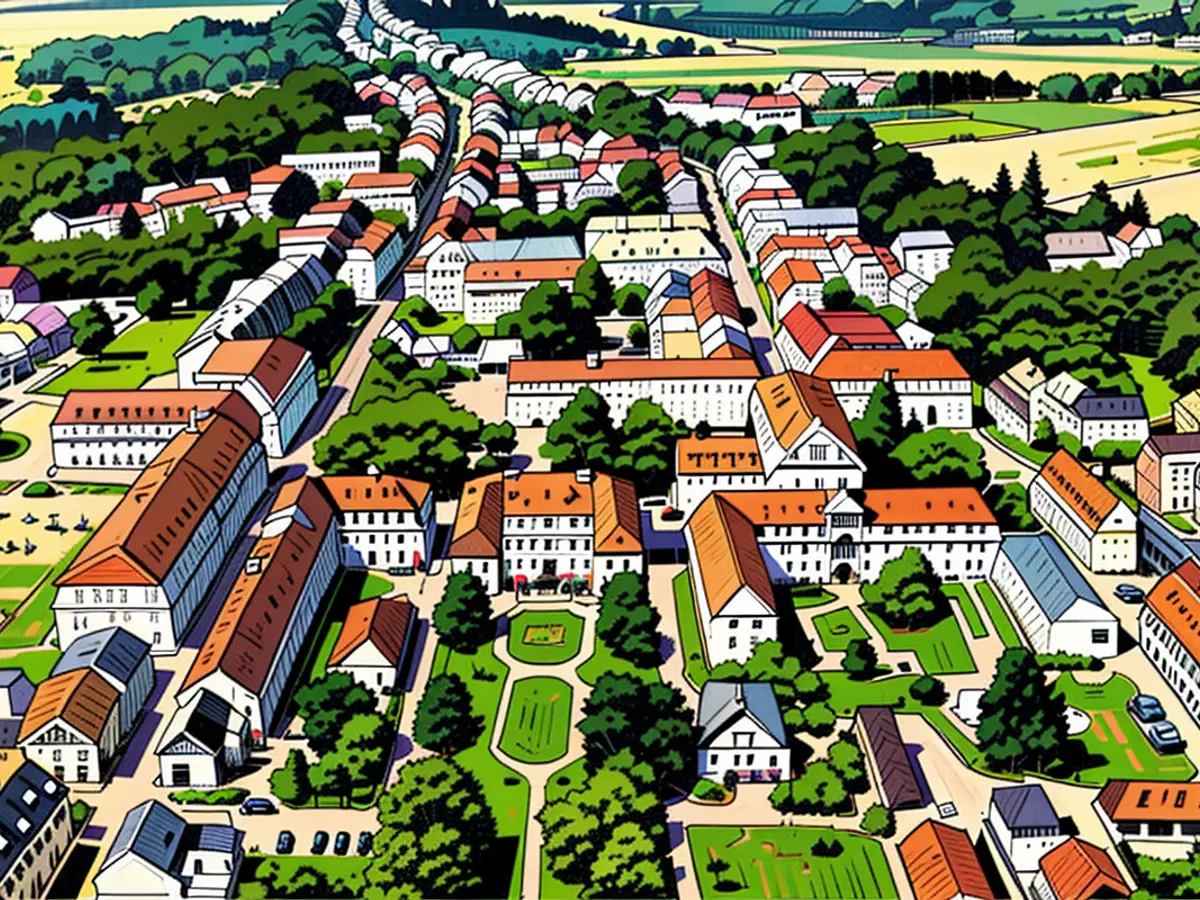Heritage, cultural - UNESCO designates Herrnhut, Saxony, as a new World Heritage site
The Unesco has designated the Saxon small town Herrnhut as part of the Settlements of the Moravian Church in Herrnhut as a new World Heritage site. The responsible committee of the UN organization for Education, Science, Culture and Communication (Unesco) made the decision on Friday at its 46th session in New Delhi, India.
"The Settlements of the Moravian Church in Herrnhut stand for cultural and spiritual exchange beyond national borders and continents," said the President of the German UNESCO Commission Maria Böhmer. "They are diverse and therefore a symbol of the World Heritage idea."
Unanimous decision
The decision was reportedly made unanimously according to the statements of Saxony's State Chancellor Conrad Clemens. "Today is a special day for Herrnhut and Upper Lusatia, on which many people have worked," said the CDU politician, who followed the UNESCO World Heritage Committee meeting on site.
Minister President Michael Kretschmer (CDU) congratulated Herrnhut for the recognition. He was very pleased, he said in a video message on the platform X. "The people behind this success have achieved a lot. The entire free state benefits from it."
The UNESCO decision is "a great news for Saxony," said Vice-Minister President Wolfram Günther (Greens). "In times when many negative news from Saxony come, the decision directs the focus on the many engaged and active people on site who are building the future of the free state."
Culture and Tourism Minister Barbara Klepsch (CDU) emphasized that the Moravian Church opens up new opportunities for worldwide advertising of visitors for Upper Lausitz and the whole of Saxony as the third transnational World Heritage site after the Muskauer Park and the Montanregion Erzgebirge.
Moravian Church founded in Herrnhut in 1722
Herrnhut is the origin of the Evangelical Moravian Church. Refugees from Moravia founded the place in 1722. The missing "d" in the name of the community "Brethren" is due to the language of the time, as one still spoke of "Gemeine" then.
As the Moravian Unity spread worldwide, missionaries from Upper Lusatia also carried the building plans for new settlements to other countries. With Christiansfeld in Denmark, one of them was already acknowledged as a World Heritage site of UNESCO in 2015.
Herrnhut itself was now added to the list through a transnational extension application. The city in Eastern Saxony applied for recognition together with Bethlehem in Pennsylvania, USA, and Gracehill in Northern Ireland.
Focus in Moravian Church on communal living
The settlements of the Moravian Church characterized a simple, clear architecture with a focus on communal living, working and faith, said State Chancellor Clemens, who himself belongs to the Moravian Church.
"It's an idea of community living that is based on openness, equality and almost familial togetherness," said he in conversation with the German Press Agency. The title is "just in a time when we experience a lot of division and polarization, a beautiful sign for Saxony."
Count Nikolaus Ludwig von Zinzendorf (1700–1760) granted the Protestant refugee land for the settlement in Upper Lausitz to the Moravian Brethren. Exactly on 17 June 1722, the carpenter Christian David felled the first tree to build the new place under the "Lord's Hat."
In the Federal Republic, there are more than 50 World Heritage Sites. And presumably on Saturday, a decision is expected about a purely German application: Schwerin and its castle on an island in the lake, as well as further parts of the old town, could then also be on the list of World Cultural Heritage. For ten years, the state capital of Mecklenburg-Vorpommern has been on Germany's nomination list.
- The UNESCO World Heritage recognition extends to the Saxon small town of Herrnhut, located in Upper Lusatia, which is part of the Settlements of the Moravian Church in Herrnhut.
- Maria Boehmer, the President of the German UNESCO Commission, lauded the Settlements of the Moravian Church in Herrnhut for promoting cultural and spiritual exchange beyond borders.
- The decision to designate Herrnhut as a World Heritage site was made unanimously during UNESCO's 46th session in New Delhi, India.
- Saxony's State Chancellor Conrad Clemens, a CDU politician, expressed his joy and appreciation for the hard work of many people in making this recognition possible.
- Michael Kretschmer, the Minister President of Saxony, congratulated Herrnhut on its recognition and praised the achievements of the people behind this success.
- The UNESCO decision brings new opportunities for promoting tourism in Upper Lausitz and the entire Saxony region, as the Moravian Church is now recognized as the third transnational World Heritage site in Saxony.
- Herrnhut, the origin of the Evangelical Moravian Church, was established in 1722 by refugees from Moravia who sought refuge there.
- The settlements of the Moravian Church are known for their simple, clear architecture and focus on communal living, which promote openness, equality, and a sense of familial togetherness.








